
Are Metal Roofs Sustainable? A Guide to Eco-Friendly Roofing in Austin
TL;DR
Metal roofs are one of the most sustainable roofing options available for Austin homeowners. They are made from recycled materials, are highly recyclable, have a long lifespan, reduce landfill waste, and reflect heat to lower energy consumption. Plus, they’re recyclable at the end of their life.
What Makes a Roof Sustainable?
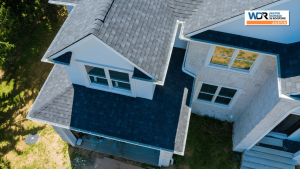 A sustainable roof conserves resources, minimizes environmental impact, and contributes to long-term energy efficiency. Key factors include:
A sustainable roof conserves resources, minimizes environmental impact, and contributes to long-term energy efficiency. Key factors include:
- Use of recyclable or recycled materials
- High durability and longevity
- Energy efficiency (e.g., solar reflectivity)
- Reduced maintenance and waste over time
- Minimizes waste through efficient use of materials and recycling practices
These characteristics align well with modern green building standards, such as LEED and Energy Star guidelines.
Why Metal Roofing Is Considered Eco-Friendly
Metal roofing stands out in nearly every sustainability category. Here’s why:
For environmentally conscious homeowners, metal roofing is a sustainable choice.
♻️ Recyclable & Recycled Materials
Most metal roofs contain 25%–95% recycled content and are 100% recyclable at the end of their life. This drastically reduces construction-related landfill waste compared to asphalt shingles.
🌡️ Reflectivity = Energy Savings
Many metal roofing options—especially with cool roof coatings—reflect the sun’s rays and reduce heat absorption, helping to keep homes cooler. This lowers cooling costs in Austin’s hot climate.
Explore more about whether metal roofing reduces energy costs. Yes—it absolutely can.
🧱 Long Lifespan = Less Replacement Waste
A longer roof’s lifespan means less frequent replacements and reduced waste. While asphalt roofs typically last 15–20 years, a well-installed standing seam metal roof can last 40–70 years. That’s decades less waste entering landfills.
Sustainability Benefits in Austin’s Climate
In a hot, often stormy climate like Austin’s, sustainability also means resilience.
- Hail- and wind-resistance: Withstands severe weather and strong winds common in Austin, reducing premature replacement
- Fire-resistant: Ideal for wildfire-prone areas
- Cool roof coatings: Minimize AC demand during triple-digit summers
Bonus: These benefits can help lower home insurance premiums over time.
Interested in eco-conscious durability? Learn more about our metal roofing installation process.
Are All Metal Roofs Equally Green?
Not quite. Here’s what to consider:
Material Type
- Aluminum: Often made from recycled beverage cans; very eco-friendly
- Galvalume & Steel: Durable but heavier to transport, so consider local sourcing
Coating & Paint
Opt for non-toxic finishes and reflective coatings that meet Energy Star standards.
Fastening System
Concealed systems, such as snap-lock standing seam, last longer with fewer penetrations, thereby minimizing potential leaks and repairs.
Comparing Metal to Asphalt & Tile
| Feature | Metal Roof | Asphalt Shingles | Clay/Concrete Tile |
|---|---|---|---|
| Recyclable | ✅ 100% | ❌ Rarely | ✅ Sometimes |
| Reflectivity | ✅ High | ❌ Low | ✅ Moderate |
| Lifespan | ✅ 40–70 years | ❌ 15–20 years | ✅ 30–50 years |
| Weight | ✅ Lightweight | ✅ Light | ❌ Heavy (structural impact) |
| Maintenance | ✅ Low | ❌ Moderate/High | ❌ High |
The lightweight design of metal roofs puts less strain on your home’s structure and foundation compared to heavier materials like clay or concrete tile.
Compare our post on metal roofing vs. tile for more information.
Metal Roofing and Increased Property Value
 Investing in metal roofing is one of the most innovative ways Austin homeowners can boost their property value. Metal roofs are highly sought after for their exceptional durability, energy efficiency, and modern aesthetic appeal. Unlike traditional asphalt shingles, which often require frequent roof replacements and ongoing maintenance, metal roofs offer a long lifespan—often 50 years or more—with little maintenance required. This longevity and reliability make metal roofing a standout feature for potential buyers, especially in a competitive Austin, TX real estate market.
Investing in metal roofing is one of the most innovative ways Austin homeowners can boost their property value. Metal roofs are highly sought after for their exceptional durability, energy efficiency, and modern aesthetic appeal. Unlike traditional asphalt shingles, which often require frequent roof replacements and ongoing maintenance, metal roofs offer a long lifespan—often 50 years or more—with little maintenance required. This longevity and reliability make metal roofing a standout feature for potential buyers, especially in a competitive Austin, TX real estate market.
According to the National Association of Realtors, homes with metal roofs can sell for up to 10% more than those with conventional asphalt shingles. Buyers are drawn to the peace of mind that comes with a roof designed to withstand extreme weather conditions, from heavy rain to hot summers. The extra layer of protection provided by metal roofing not only safeguards the home but also reduces the likelihood of costly repairs. For homeowners, this means a higher return on investment and increased property value when it’s time to sell. In short, choosing metal roofing is a win-win for both current comfort and future resale.
Curb Appeal and Metal Roofing
A metal roof does more than protect your home—it can dramatically enhance your home’s curb appeal. The sleek lines and modern finishes of metal roofing instantly elevate the look of any property, making it a standout in any Austin neighborhood. With a wide variety of colors, profiles, and finishes available, metal roofs can be tailored to complement any architectural style, from classic bungalows to contemporary homes.
For those who love the look of traditional roofing materials, metal shingles can mimic the appearance of wood shakes or even cedar, while delivering the superior durability and energy efficiency that metal is known for. This versatility allows homeowners to achieve the perfect balance between timeless charm and modern performance. Additionally, metal roofing’s ability to reflect solar heat results in lower energy consumption and reduced air conditioning costs—an essential consideration during Austin’s hot summers. By choosing a metal roof, you’re not only boosting your home’s aesthetic appeal and curb appeal but also investing in a sustainable, energy-efficient upgrade that benefits both your wallet and the environment.
How to Choose the Right Sustainable Metal Roof
Here are the most effective ways to choose a sustainable metal roof in Austin, Texas:
- Go local – Choose products manufactured or distributed locally to reduce your carbon footprint
- Look for certification – Cool Roof Rating Council (CRRC) or Energy Star labels
- Hire a trusted installer – An experienced crew ensures proper installation, minimizing waste and maximizing performance
Utilize our roof inspection service to evaluate your current system, or request a roof estimate for a metal roof upgrade.
Choosing the Right Metal Roofing Contractor
Selecting the right contractor is crucial to the success of your metal roofing project. Austin homeowners should prioritize working with local metal roofing experts who understand the unique challenges of Central Texas weather and have a proven track record with metal roofing systems. A reputable contractor will recommend the best materials—such as steel or aluminum—tailored to your home’s needs and ensure the installation is done to the highest standards.
Before hiring, check the contractor’s customer satisfaction ratings, warranties, and certifications. These factors are key indicators of quality workmanship and reliable service. The right contractor will not only provide superior protection and energy efficiency for your home but also help minimize the environmental impact of your roofing project by using sustainable materials and efficient installation practices. By partnering with experienced professionals, you can be confident that your new metal roof will deliver long-lasting performance and peace of mind for years to come.
Common Mistakes to Avoid with Metal Roofing
While metal roofing offers outstanding durability and long-term value, avoiding common mistakes is essential to maximize its benefits. One of the most common errors is improper installation, which can result in leaks, reduced energy efficiency, and a shortened roof lifespan. It’s essential to choose high-quality materials, steering clear of thin or corroded metal that can compromise your roof’s integrity, especially during Austin’s extreme weather conditions, such as heavy rain and high winds.
Neglecting regular maintenance is another pitfall. Although metal roofs require minimal maintenance, periodic inspections help identify minor issues before they escalate into significant problems, ensuring your roof continues to perform optimally. Working with a reputable contractor who uses top-grade materials and follows best installation practices is the best way to avoid these mistakes. By doing so, Austin homeowners can enjoy the full long-term value, energy efficiency, and environmental benefits of their metal roof while minimizing the need for frequent repairs or replacements.
The Future of Metal Roofing
The future of metal roofing is brighter than ever, especially as more homeowners in Austin and beyond seek sustainable, energy-efficient solutions for their homes. Innovations in technology and manufacturing are driving the development of advanced metal roofing products that offer enhanced durability, improved energy efficiency, and increased aesthetic appeal. Standing seam metal roofs, for example, are gaining popularity due to their sleek appearance and ability to withstand the extreme weather conditions typical in Central Texas.
The use of recyclable materials, such as steel and aluminum, is also helping to reduce the environmental impact of roofing in Austin. As the industry continues to evolve, expect to see even more options for low-maintenance, long-lifespan metal roofs that reflect solar heat and help lower energy bills. With growing awareness of sustainability and the need for long-lasting roofing solutions, metal roofing is poised to become the top choice for homeowners seeking to protect their investment, enhance curb appeal, and minimize their environmental impact. Whether you’re planning your next metal roofing project or simply exploring options, the future promises even more innovative, eco-friendly choices for Austin homes.
Choosing the Right Metal Roofing Contractor
 Selecting the right contractor is crucial to the success of your metal roofing project. Austin homeowners should prioritize working with local metal roofing experts who understand the unique challenges of Central Texas weather and have a proven track record with metal roofing systems. A reputable contractor will recommend the best materials—such as steel or aluminum—tailored to your home’s needs and ensure the installation is done to the highest standards.
Selecting the right contractor is crucial to the success of your metal roofing project. Austin homeowners should prioritize working with local metal roofing experts who understand the unique challenges of Central Texas weather and have a proven track record with metal roofing systems. A reputable contractor will recommend the best materials—such as steel or aluminum—tailored to your home’s needs and ensure the installation is done to the highest standards.
Before hiring, check the contractor’s customer satisfaction ratings, warranties, and certifications. These factors are key indicators of quality workmanship and reliable service. The right contractor will not only provide superior protection and energy efficiency for your home but also help minimize the environmental impact of your roofing project by using sustainable materials and efficient installation practices. By partnering with experienced professionals, you can be confident that your new metal roof will deliver long-lasting performance and peace of mind for years to come.
FAQ: Sustainable Metal Roofing in Austin, TX
Are metal roofs considered eco-friendly?
Yes, many metal roofing products are viewed as environmentally friendly. They are often manufactured using recycled materials and can typically be recycled again at the end of their lifespan. Their reflective surfaces may also contribute to lower cooling demands in warmer climates, such as Austin.
Do metal roofs lower your energy bills?
Metal roofs can help reduce energy use in some homes by reflecting solar heat, especially when coated with a reflective finish. In sunny areas like Central Texas, this may translate to reduced indoor cooling needs. However, the actual savings depend on several factors, including roof color, attic insulation, and HVAC efficiency.
How long does a metal roof last compared to shingles?
Metal roofs generally have a longer expected lifespan than many traditional roofing materials. While asphalt shingles typically last 15 to 30 years, a well-installed and properly maintained metal roof might last 40 to 70 years. Longevity can vary depending on the type of metal and local weather conditions.
Can metal roofing be installed over existing shingles?
In some cases, yes. Metal roofing can often be installed over existing roofing materials, including a single layer of asphalt shingles, if local building codes permit it and the structure is in good condition. A professional inspection is essential to determine whether your current roof can support an overlay without compromising its long-term performance.
Are there tax credits for installing energy-efficient metal roofs?
Homeowners may be eligible for federal or local tax incentives when installing qualifying energy-efficient roofing materials. Eligibility often depends on the type of product and whether it meets current ENERGY STAR® or local energy code standards. It’s best to consult a tax professional or visit the IRS and local municipal websites for up-to-date guidance.
Final Thoughts & Resources
Metal roofing is one of the most eco-friendly investments a homeowner can make. In Austin, Texas’s hot, storm-prone climate, it pays off in reduced energy bills, long-term performance, and lower environmental impact.
Metal roofing can also enhance your home’s exterior with modern styles and color options, while providing sustainability benefits.
Still wondering if it’s the right fit for you?
- Read about common concerns about metal roofing
- Learn why you should replace your shingle roof with metal
- Watch how we work on the job: WDR At Work Videos
When you’re ready, our Austin roofing team is here to help you transition to a sustainable roofing solution.


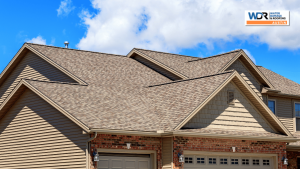 A cool roof is designed to reflect more sunlight and absorb less heat than traditional roofing. Unlike a conventional roof, which tends to absorb and transfer more heat into the building, a cool roof helps maintain lower indoor temperatures and reduces cooling needs. These roofs are made from highly reflective, cool materials or coatings that enhance solar reflectance and help reduce surface temperatures, keeping homes cooler in hot climates like Austin.
A cool roof is designed to reflect more sunlight and absorb less heat than traditional roofing. Unlike a conventional roof, which tends to absorb and transfer more heat into the building, a cool roof helps maintain lower indoor temperatures and reduces cooling needs. These roofs are made from highly reflective, cool materials or coatings that enhance solar reflectance and help reduce surface temperatures, keeping homes cooler in hot climates like Austin. Here are the top-performing metal roofing systems for cool roof performance:
Here are the top-performing metal roofing systems for cool roof performance: Whether you’re considering a cool roof or a metal roof, understanding the installation and maintenance process is key to maximizing energy savings and long-term performance. Cool roofs can be installed on a wide range of residential and commercial buildings, and generally require minimal upkeep. However, it’s essential to carefully assess your building’s structure, roof slope, and the surrounding environment to ensure the chosen cool roof system will deliver optimal energy performance.
Whether you’re considering a cool roof or a metal roof, understanding the installation and maintenance process is key to maximizing energy savings and long-term performance. Cool roofs can be installed on a wide range of residential and commercial buildings, and generally require minimal upkeep. However, it’s essential to carefully assess your building’s structure, roof slope, and the surrounding environment to ensure the chosen cool roof system will deliver optimal energy performance.
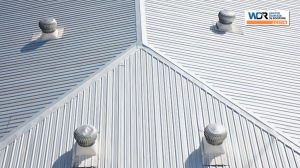 Austin isn’t your average roofing environment. It brings:
Austin isn’t your average roofing environment. It brings: Austin’s climate fluctuates between dry spells and sudden downpours. Metal roofs are:
Austin’s climate fluctuates between dry spells and sudden downpours. Metal roofs are: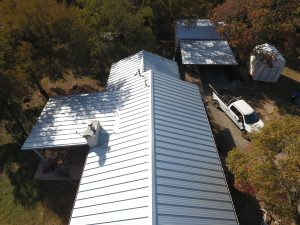 If you’re exploring roofing options in Central Texas, metal should be on your shortlist.
If you’re exploring roofing options in Central Texas, metal should be on your shortlist.

 When it comes to metal roofing, homeowners have a variety of materials and styles to choose from. The most popular options include standing seam metal roofs, exposed fastener metal roofs, and metal shingles.
When it comes to metal roofing, homeowners have a variety of materials and styles to choose from. The most popular options include standing seam metal roofs, exposed fastener metal roofs, and metal shingles. Not all metal roofs are created equal when it comes to low-slope applications. The design and installation requirements of each system play a significant role in their suitability for roofs with a gentle pitch.
Not all metal roofs are created equal when it comes to low-slope applications. The design and installation requirements of each system play a significant role in their suitability for roofs with a gentle pitch.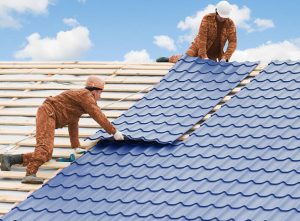 Choosing between standing seam and exposed fastener metal roofs isn’t about which is “best”—it’s about what’s right for your home and your building’s needs. The choice of roof material and metal roofing system should be based on your long-term goals, whether for residential, commercial, or agricultural buildings.
Choosing between standing seam and exposed fastener metal roofs isn’t about which is “best”—it’s about what’s right for your home and your building’s needs. The choice of roof material and metal roofing system should be based on your long-term goals, whether for residential, commercial, or agricultural buildings.
 Metal roofing is a system made of large metal panels or tiles designed to protect buildings from the elements. Unlike traditional
Metal roofing is a system made of large metal panels or tiles designed to protect buildings from the elements. Unlike traditional  ✅ Longevity – Can last 40–70 years
✅ Longevity – Can last 40–70 years Metal roofing stands out as one of the most environmentally friendly choices available for homeowners today. Many metal roofs are made from recycled materials and are fully recyclable at the end of their lifespan, helping to reduce landfill waste. Options like stone-coated metal and standing seam metal roofs are especially popular for their combination of energy efficiency and durability.
Metal roofing stands out as one of the most environmentally friendly choices available for homeowners today. Many metal roofs are made from recycled materials and are fully recyclable at the end of their lifespan, helping to reduce landfill waste. Options like stone-coated metal and standing seam metal roofs are especially popular for their combination of energy efficiency and durability.